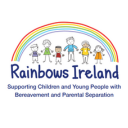Explaining Cremation to Children: A Gentle Guide for Parents and Guardians
Understanding how to talk to children about cremation can be challenging. Much of the anxiety adults feel stems from a lack of knowledge about the process, which can lead to discomfort when involving children. This article offers a calm, factual approach to help guide these conversations.
Starting the Conversation
In most cases, cremation is a personal choice made by the person who has died. This is the best starting point when discussing the topic with children. The conversation can begin by explaining that the person who died preferred cremation over other options.
The depth of the discussion will depend on the child’s age and emotional development. It’s important to speak in clear, simple language and to do so in a relaxed, reassuring manner.
Clarifying the Process for Adults
There is a common myth that the body is burned during cremation. In reality, the coffin is placed in a chamber heated to extremely high temperatures—typically between 800 and 1000 degrees Celsius. This process reduces the body to bone fragments, which are then processed into ashes.
This information is primarily for adults. If you need further details, please consult your Funeral Director. You can use this understanding as a basis for conversations with children, tailored to their age and comprehension.
Explaining Cremation to Children
Once you’ve reassured the child that cremation was the choice of the person who died, explain what will happen in practical terms. Let them know there will be a service at the crematorium, and after the service, the curtains will close so the coffin is no longer visible. Later, the coffin will be taken for cremation.
Very young children typically won’t ask further questions, just as they often don’t about burial. Older children may ask what cremation means, and you can share the explanation above using age-appropriate language.
Children’s Understanding of Death
Children tend to be more factual than adults. Their understanding of burial or cremation is often easier if they have seen the body of the person who died. Even very young children can recognise the physical changes after death.
Once they’ve seen the body, you can gently explain that the person no longer needs air, food, or other things that living people do. This can lead naturally into a conversation about respectful ways to care for the body after death.
Should Children Attend Cremations or Burials?
Some adults believe children should be shielded from cremation or burial ceremonies. However, excluding them can lead to confusion and anxiety. Children may struggle with practical facts such as what has finally happened to the coffin, is it still where they last saw it? Children need factual information to begin to process the death.
Clear, honest explanations from someone who knows the child well can help prevent emotional difficulties in the months following a death. Being included in the process can help children understand and accept what has happened.
Memorial Gift Shop
View AllRIP.ie Acknowledgement cards
Send heartfelt thanks to those who supported you during your time of loss with our beautifully pen written Acknowledgement Cards.
RIP.ie Sympathy cards
Thoughtfully penned Sympathy Cards. Designed and printed in Ireland by RIP.ie.
Mounted Prints
Mounted original design prints, inspired by the early Irish Celtic illuminated manuscript, The Book of Kells.


